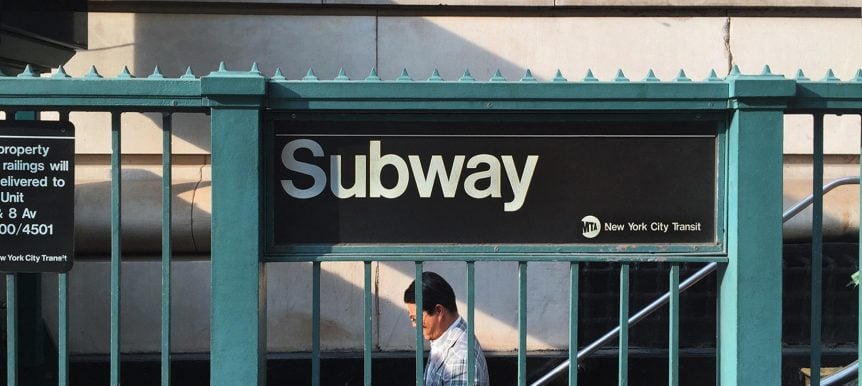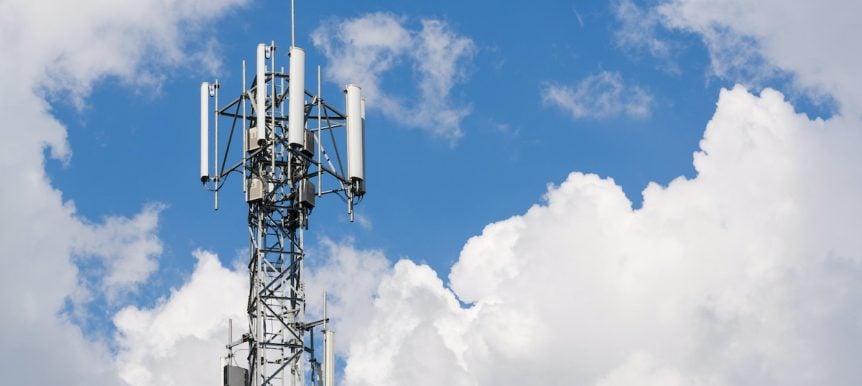Millimeter Wave Mobile Communications for 5G Cellular? It’s Working!

In 2014, when the first Brooklyn 5G Summit was held at the NYU Tandon School of Engineering, many were skeptical. It had been just a year since Theodore “Ted” Rappaport, the founding director of the multidisciplinary academic research center NYU WIRELESS, first advocated for the potential of the millimeter wave (mmWave) spectrum with the publication of his seminal paper “Millimeter Wave Mobile Communications for 5G Cellular: It Will Work!” With bands lower on the spectrum being used to near capacity by mobile carriers, Rappaport’s idea was a potential game-changer, albeit an unlikely one in the minds of the Summit’s first attendees. By the following year, the skepticism had begun to wane, and “now everyone has seen the light,” as Marcus Weldon, the president and CTO of Bell Labs asserted at the 2018 Summit. “The FCC [Federal Communications Commission] is looking above 96GHz, and so is the world.”
Hundreds of heavy hitters from the world of mobile communications attended the 2018 five-year anniversary event, held in late April at Tandon and live-streamed courtesy of IEEE to more than 2,000 registered viewers in 75 countries around the globe. The Summit is not aimed at the general public: all lectures and panels are geared to an audience deeply immersed in the business and technology of cellular communications, and presenters included representatives of such major global companies as Nokia (co-sponsor of the event), AT&T, Facebook, Huawei, Intel, Mitsubishi, NTT DOCOMO, Qualcomm, T-Mobile, and Verizon, as well as organizations like the FCC and National Science Foundation.
New 5G technology, as Rappaport has explained, “promises almost unimaginable capabilities that have never been available before, as 5G will bring the power of the Internet and ubiquitous fiber-optic communication speeds to the pocket of every human being.” But while consumers can look forward to immersive virtual reality experiences and vastly improved download speeds, much of the excitement at the Summit was being generated by what 5G will mean for enterprise, with fields like manufacturing and healthcare being revolutionized.
With the first 5G new radio (NR) standard due in a few short months, it’s becoming apparent that a fourth Industrial Revolution is at hand.
“We’re now experiencing a perfect storm,” Marc Rouanne, who leads Nokia’s mobile broadband business, said during his presentation, “Unleashing the Potential of 5G.” “Applying the artificial intelligence technology now being developed to the telecommunications industry is resulting in tremendous gains. We’re going to be seeing increased data processing from mobile sensors, automotive and public safety applications running over the same networks, and advanced interactive robots used for industrial automation, for example.” The future he envisions cannot be reliant on closed, proprietary systems, Rouanne cautioned.
We need a radical new approach based on openness and speed of innovation that will define telecom in years to come. We must give access to startups, universities, and new thinkers and developers, and that type of openness will mean collaboration, crowd intelligence, and data democracy.”
Other themes also resonated throughout the Summit, and the major take-aways included:
- A key metric of success will be the speed at which new services and technologies are rolled out; in the past, new features came to market over a period of years, but with 5G, new features and uses will come day by day (in part because of collaboration with academia and industry).
- In a fundamental transformation, the “edge cloud” will take center stage as a means of enabling 5G capabilities. Cellular systems today generally route traffic to centralized gateways using dedicated hardware. The gateway nodes are typically few and far between and often a significant distance from mobile users. Edge cloud architectures, in contrast, can provide ultra-fast cloud services for compute and storage right next to the mobile users enabling new applications, particularly for AI. With network slicing, users, enterprises and content providers can manage private clouds within the cellular network. Services can be deployed as needed to meet high-demand scenarios such as a first responder emergency.
- A revolution is underway in antenna technology, with massive MIMO and beam forming used everywhere and new chipset technology that will enable extreme speeds for both fixed and mobile access at a massive cost reduction. What seemed to be too expensive in the mmWave bands suddenly seems possible.
Thanks in large part to the industry figures at the Summit and the research conducted at NYU WIRELESS, which is currently under the direction of NYU Tandon Professor Sundeep Rangan, the day is fast approaching in which there will be under 5 milliseconds of latency in telecomm applications — easily beating the 13 milliseconds it takes an image to reach the human brain. This latency will allow ATMs to function as full-service branches because of lightning-fast video conferencing, hospital personnel to detect and respond to a patient’s changing condition with unprecedented speed, manufacturers to fix flaws in their machines instantaneously, live maps to navigate in real time, and much more.
There was a steady stream of news circulating at the event. Right now, for example, Nokia and T-Mobile are planning the roll-out of a nationwide 5G multi-band network in the United States, with deployment expected to be completed by 2020; AT&T is launching mobile 5G in a dozen cities by the end of 2018; Verizon, which recently opened a 5G-enabled Open Innovation lab in New York, will soon have 5G networks deployed in several markets; Qualcomm’s innovative 5G modem is driving 5G NR trials worldwide by numerous carriers, including in the mmWave spectrum bands; and National Instruments is launching the first 5G NR field trials for 28GHz with Samsung.
The event — which included a dinner in honor of pioneering engineer Marty Cooper — was far from all blue sky optimism, however. Seizo Onoe, Chief Technology Architect of Japanese telecomm giant NTT DOCOMO, warned that 5G posed an inflection point: “Five could be the final number we see if we don’t continue to make tech breakthroughs,” he said.
Ali Yazdan, an engineer at Facebook’s California-based Connectivity Lab, used his presentation to remind attendees of a fundamental principle: amidst the industry excitement about smart antenna technology and high-speed connectivity, meeting the needs of society and improving lives must remain the paramount goal. “We can talk about 6G and beyond,” he said. “But let’s not forget about the four billion people in remote or rural communities around the world with no Gs at all yet. Let’s work on that too.”
New York, New York (It’s a Cell of a Town)
In the history of telecommunications, Marty Cooper — and New York City itself — played pivotal roles. An electrical engineer who had been born in 1928, Cooper helped develop the first radio-controlled traffic-light system and the first handheld police radios during the 1960s.
At Motorola, where he then worked, he was given the daunting task of developing a truly portable telephone before rival AT&T. (AT&T had introduced mobile phone service in 1946, but the equipment weighed some 80 pounds and required so much battery power that it had to be installed in a user’s motor vehicle.) Cooper came through with the DynaTAC (Dynamic Adaptive Total Area Coverage) phone, which could be used for 35 minutes without needing to be charged and which, at two pounds, was, indeed, truly portable. He unveiled his innovation at a press conference on April 3, 1973 in New York City. Beforehand, in order to test the device, he strolled the sidewalk in front of the Hilton Hotel on Sixth Avenue and 54th Street to make a call. (And although he was a Midwesterner by birth, he showed characteristic New York brio; the call was to engineer Joel Engel, head of AT&T’s rival project, and reportedly involved some measure of gloating.)
New York City’s connection to telecom stretches even further back that that midtown call, however. It was here, decades earlier in their downtown offices near the Hudson River, that Bell Lab engineers had initially conceived of the concept of a cellular network, and if you’re interested in going back further still . . . Samuel Morse — who developed the telegraph and sent an historic first message (“What hath God wrought!”) on May 24, 1844 — had once lived on Washington Square East, teaching at NYU from 1835 to 1841.
Tech on Display
Attendees of the Summit were treated to an array of exhibits that showcased the latest developments in the field. A few of the highlights were:
- Massive MIMO and mmWave Channel Emulation, a pioneering, cost-effective programmable channel emulator for high bandwidth, large antenna array systems.
- High-quality virtual reality streaming via a 5G mmWave channel.
- A gigabits-per-second-capable system, operating both at millimeter-wave and sub-6 GHz frequencies.
- The world’s first channel sounding system to explore radio frequencies above 100 GHz in urban environments; NYU’s new channel sounder is the first in the world to not require a tether, allowing for an unprecedented study of Manhattan.

 Biden-Harris Administration Awards Wireless Innovation Fund Grant to Sundeep Rangan & Team
Biden-Harris Administration Awards Wireless Innovation Fund Grant to Sundeep Rangan & Team Governor Kathy Hochul calls on Professor JR Rizzo to Help Boost Accessibility for NYC Commuters
Governor Kathy Hochul calls on Professor JR Rizzo to Help Boost Accessibility for NYC Commuters With NSF and Industry Support, NYU WIRELESS Aims to Harness the THz Spectrum for Amazing Possibilities
With NSF and Industry Support, NYU WIRELESS Aims to Harness the THz Spectrum for Amazing Possibilities








